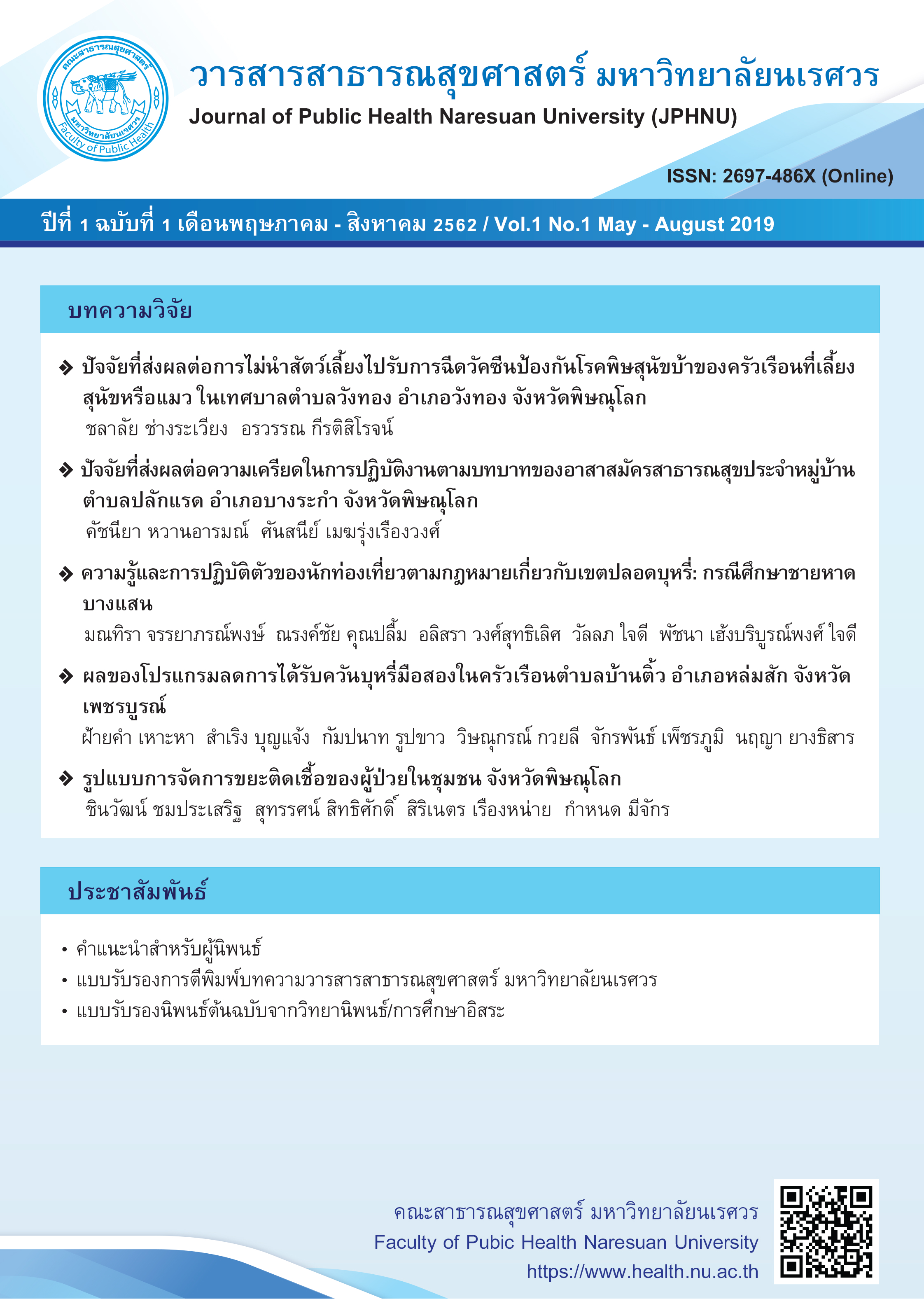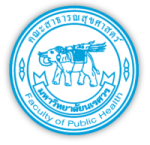Knowledge and Compliance of Touristaccording to the law on Smoking-free area: Case study of Bangsaen Beach
Keywords:
Compliance, Smoking-free, Knowledge, Bangsaen Beach, TouristAbstract
Thai law prescribes a measures to protect the health of non-smokers in public area, especially in tourist attractions. The purpose of this study was to study the knowledge and practices of tourists
according to the law on smoking ban at Bangsaen Beach. The research methodology was a survey research of 659 tourists, quota sampling, divided by the time of the survey as the pre-campaign period, the campaign activity period and the post-campaign period of 3 months and 6 months. Research tools were the questionnaires include a general information, a knowledge on the smoking-free area and a compliance according to legal measures. Data was collected by the voluntary of tourists to answer the complete online questionnaire from the google form application via QR code scanning (QR code), during January to August 2018.
The results showed that most of the tourists saw the non-smoking campaign activity at Bangsaen beach for a long time (52.8%), knew about the smoking-free information by the public relations sign (60.7%), and acknowledging that Bangsaen beach is a non-smoking area ( 81.1% in the pre-event period and 93.4% in the post-event period). For the compliance of the sample group, it was found that tourists did not smoke at Bangsaen Beach (60.0% in the pre-campaign period and 64.7% in the post-campaign period). When tourists see smoking people on the beach, the most of them usually advisable to refer to public relations boards (31.6% in the pre-campaign period and 62.6% in the post- campaign period). Recommendation was should provide the public relations sign about the smoking-free, the audio line from the tourist station, and the walking campaign to communicate information about a harmful and danger from cigarettes, including the smoking cabinet and smoking spots in public areas.
References
Papattha, C., &Arpavate, W. (2011). Awareness,knowledge, attitude and pretties on the global warming problem of the people in Bangkok and Bangkok area. Bangkok:National research council of Thailand. (in Thai)
Prapasawat, S. (2011). Attitude and satisfaction of tourists toward one-day tourism at Bangsaen beach, Chonburi province of Bangkok population. Master of Business Administration. Bangkok University. (in Thai)
Saensuk municipality, Ministry of Interior. (2018). Bangsaen in the future: from yesterday… to today the development work of Saensuk municipality B.E.2557-2560.Chonburi: Saensuk municipality. (in Thai)
Taweewattana, H. (2014). FCTC for Thai smokeless. Bangkok: Tobacco Control Research and Knowledge Management Center. (in Thai)
Thaweesree, T., & Pongpumma, L. (2018). Compliance of Thai tourists with the Smoke-free regulation as per the notification of Ministry of Public Health (No.19) B.E. 2553: a case study conducted with hotels, resorts or bungalows, tourist attraction and publictransport stations. Journal of Health Science,27(6): 1-9. (in Thai)
The committee of Non-Smoking beach, Saensuk municipality. (2019). Resolution of the Non-Smoking beach on 12 February 2019. Copied document. (in Thai)
The Command of the Department of Marine and Coastal Resources 1064/2560 the protection measure of marine resources and coastal beaches. (2019, 2 November). Royal Thai Government Gazette. Vol. 134 Special part 269D: 22-24. (in Thai)
Thuansri, Y., & Oonjan, S. (2016). Mechanism to reduce access to cigarettes of male students participatory of Uttaradit Rajabhat University. Lampang Rajabhat University Journal, 5(1),28-41. (in Thai)
Tobacco Control Research and Knowledge Management Center, Mahidol University. (2018). The report of tobacco consumption in Thailand B.E. 2561. Bangkok: Charoen Dee Man Kong Printing. (in Thai)
Tovisetkul, C.P. (2011). Guidelines for law enforcement on the Health protection of Nonsmokers in the eastern tourism beach of Thailand. Journal of politics, administration and law. 3(2), 211-240. (in Thai)
Viriyachaiyo, V., & Lim, A. (2009). Tourists’ attitudes towards ban on smoking in air- conditioned hotel lobbies in Thailand. Tobacco control, 2009(18), 238-240.
Vutiso, P., Yimlamai, K., Thongnit, M., & Khunkhavan, T. (2013). A community participation model of tobacco accessibility prevention for youth in Muang district, Chaiyaphum province. Thai Journal of Nursing, 62(1), 12-21. (in Thai)
WHO. (2018, March 23). Prevalence of tobacco smoking. Retrieved May 21, 2019, from https://apps.who.int/gho/data/node.sdg.3-a-viz?lang=en
Whyte, F. & Kearney, N. (2019, May 21). Tobacco control factsheets: Enhancing the nurse’s role in tobacco control2007. Retrieved May 21,2019,from https://tobacco free.thainurse.org/images/Research/Enhancenurserole.pdf
Downloads
Published
How to Cite
Issue
Section
License
The published article is copyrighted by the Journal of Public Health and Health Sciences Research.
The statements that appear in each article in this academic and research journal are the personal opinions of each author and are not related to Naresuan University and other faculty members in the university. Responsibilities regarding each article are the responsibility of each author.






